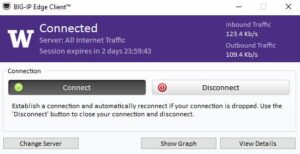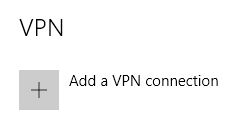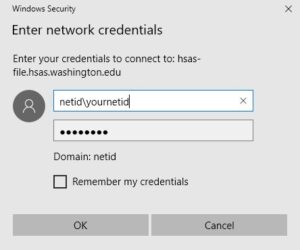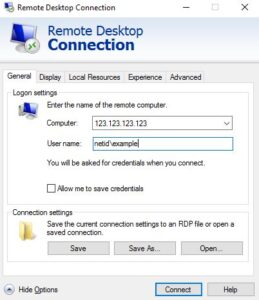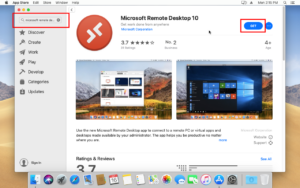Employee and Department needs and authorization may vary. Not all guides shown below may be relevant for your work-from-home setup.
UW VPN Setup
The first and most important step to working from your home computer is to download and install Husky OnNet (aka BIG-IP Edge Client). This software creates a secure connection to the UW servers which many applications, intranet sites, and department shared drives require:
UW IT Connect: Download Husky OnNet VPN
Once you have navigated to IT Connect: Download and use Husky OnNet:
- click on the link for: Download Husky OnNet
- click: Terms and Conditions
- click: I Agree
Important: Some departments require specialized VPN configurations in addition to installing the VPN client. If you belong to one of the following departments, please click the appropriate link for instructions or contact info to complete these additional steps:
Hall Health Center (HHC)
Please email Hall Health IT at hhnhelp@uw.edu
WFH Option 1 – Connect directly to your office computer
You can use your home computer to set up a remote connection to your office computer. This may be the easiest option for most employees since it only takes a few steps and does not require additional software since you will still be working off of your regular office PC.
Step 1: Before you can establish a remote connection to your work PC, you will either need the name of your PC or your IP address:
Step 2: From your home computer after connecting to the VPN you the remote connection software to start a remote session with your office computer:
Note: It is important that you do not put your office computer to Sleep or Shut Down as this will make it inaccessible until someone physically goes to the computer to turn it back on.
WFH Option 2 – Configuring your home computer for work
Guides for installation and configuration of frequently used software and network resources you may need when working directly off of your home computer.
Accessing your UW Email
You can connect to your UW Email either through a web browser using the Outlook Web Application (OWA) or you can use you NetID to download and install a fully licensed copy of Microsoft Office 360 Pro Plus.
- UW WebMail Guide (OWA) | Microsoft Outlook Web Application
- Microsoft Office Pro Plus for UW Employees
Adding your Department Drives
While the VPN is connected, you will be able to connect to your department’s drives. Follow these directions to get your mapped drives setup:
- Guide to Connect to a Network Share
- For the “Folder” entry for when you’re mapping the drive, you’ll need the folder path for the drive you wish to connect to. You can contact ASA-IS for help in getting this information.
Installing Zoom
You may need to install Zoom in order to attend UW meetings or for receiving help from ASA-IS. The University of Washington has a license for Zoom that will allow you to install an upgraded version of the program for free:
- UW Zoom: Download Center
- UW Zoom: How to install and sign into Zoom
- UW Zoom: Zoom FAQs
Zoom for HIPAA and FERPA Related Tasks
If your meetings will contain content that falls under HIPAA or FERPA guidelines, it would be best to use the special version of Zoom that fulfills the state requirements for those subjects. You can find that information here:
- UW Zoom: HIPAA and FERPA Compliance
Additional Resources
- Need to connect a new monitor: Visual Guide to Monitor Connections
- Looking for additional software: IT Connect UWare
- Check if there’s a service outage: UW Major Computing and Network Outages
- Additional questions or requests: Contact Us | Email ASA-IS

